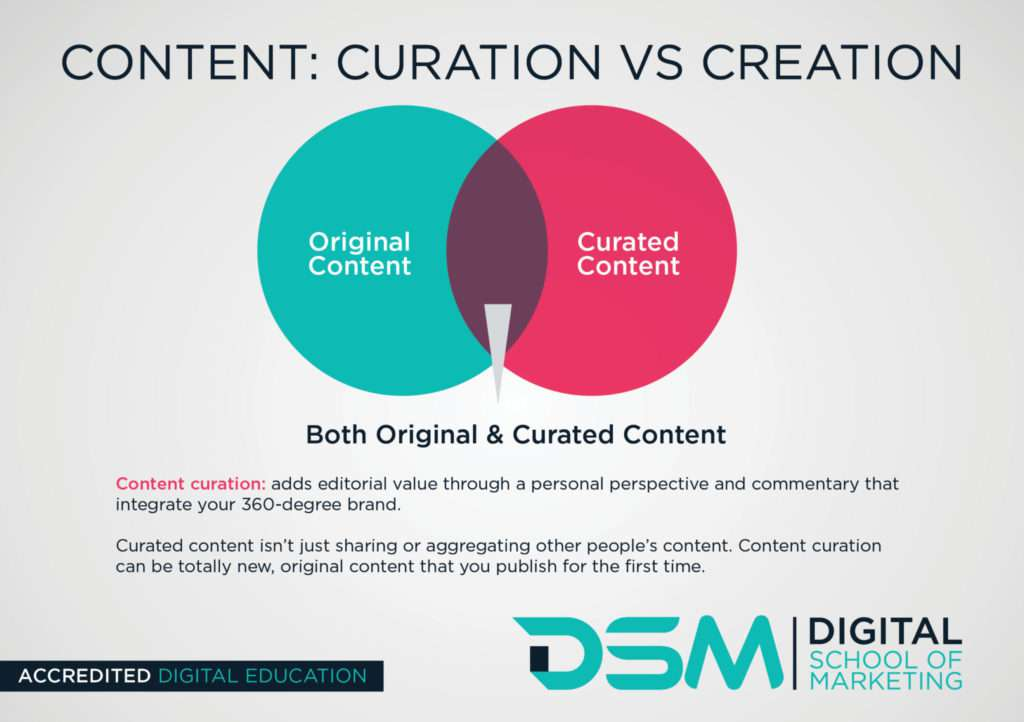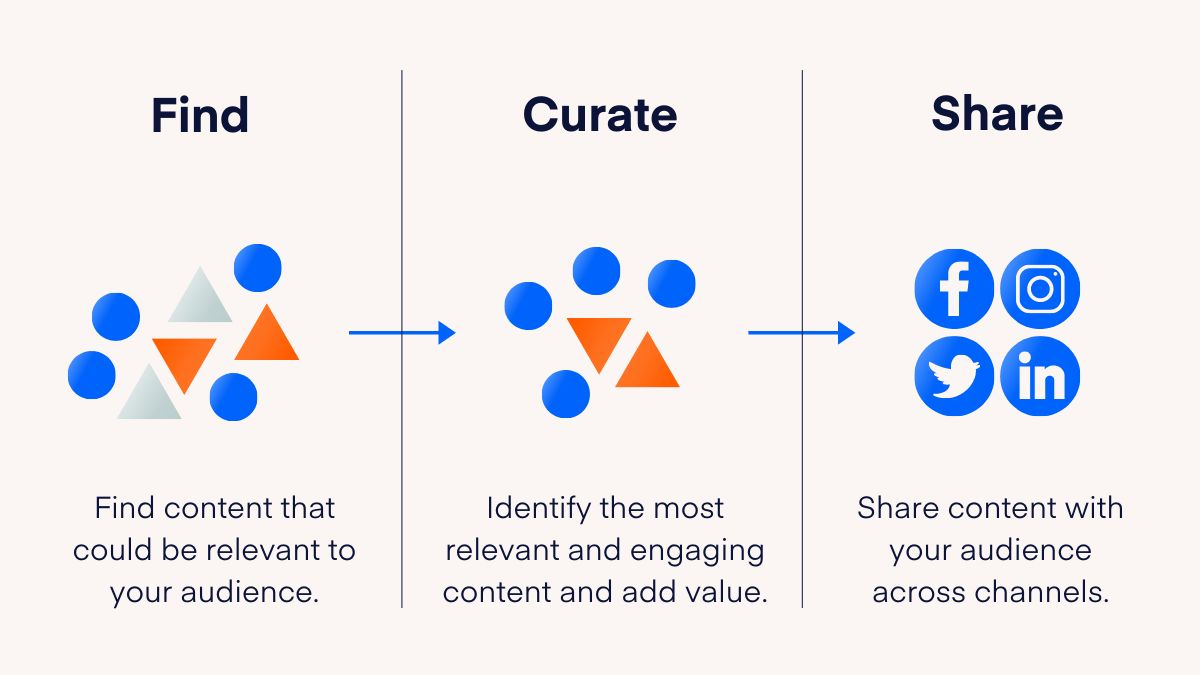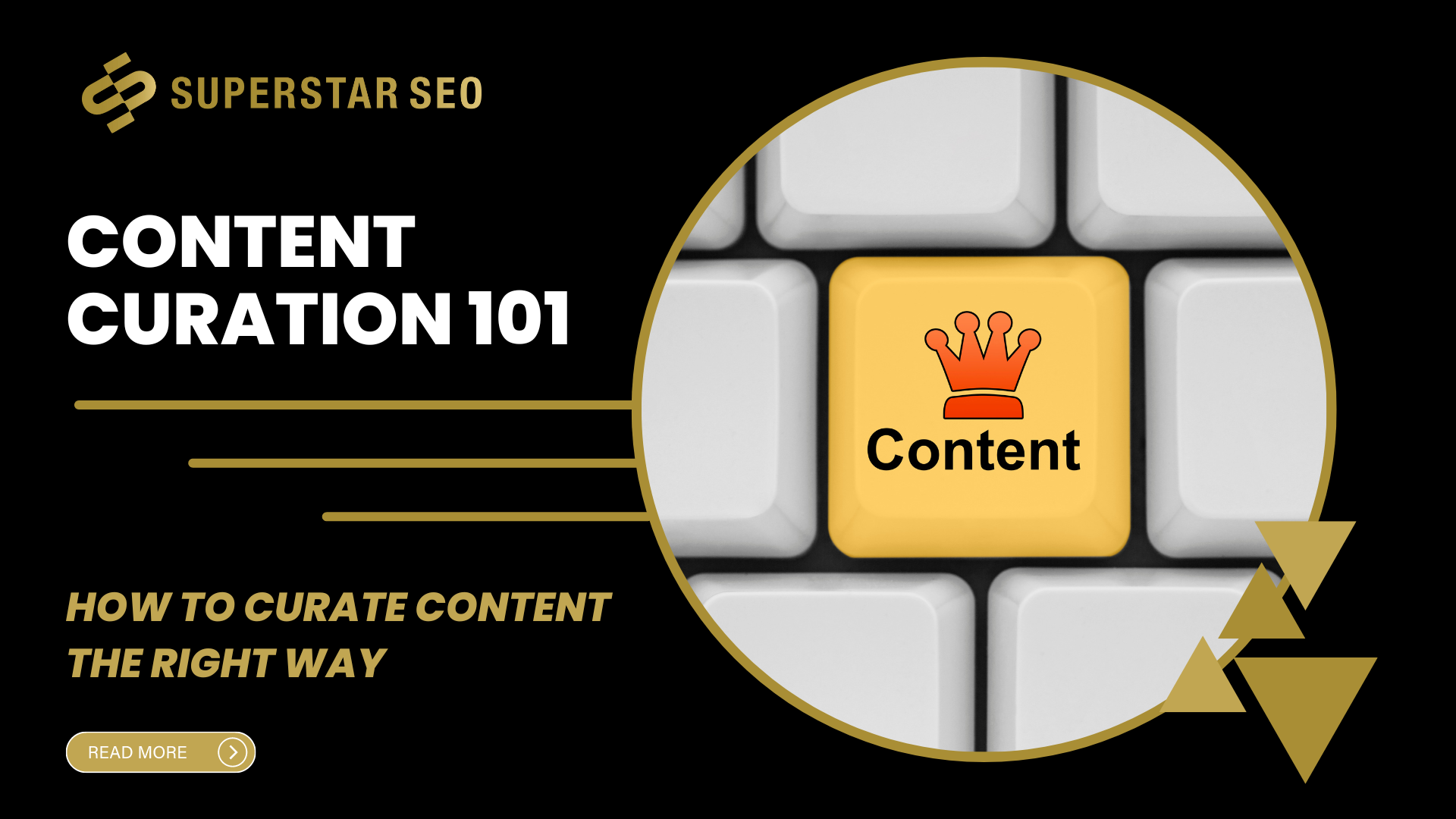Content Curation 101: How to Curate Content the Right Way
Content curation has exploded in popularity in recent years, but it can be hard to know where to start.
The good news is that once you know how to do it the right way, you can share information that’s helpful to your customers while also building your brand’s authority on the subject matter in question…
Leading to more clicks and conversions in the process.
Content curation, if done correctly, can be an incredibly powerful tool for driving engagement and boosting your overall brand visibility on social media networks.
So, if done right, it can even boost your SEO.
When creating engaging content that quotes part of the content and links to it, they ranked 1st.
On the other hand, using content curation incorrectly (or even just not to its full potential) can waste both time and resources.
Your reputation may take a hit, especially if you plagiarize.
As Google’s quality content guidelines expressly state:
“Think about what makes your website unique or valuable.”
This blog post will give you everything you need to know about how to do it the right way so that you can be sure it’s going to help your business and not hurt it.
What Is Content Curation?
Content curation definition: Curated content is a blog post, video, photo, or another form of media that has been carefully selected, evaluated, and shared with your audience.
It is important that you do your research on what type of content will work best for your needs and then find some examples of that type on different sites.

Once you have found some content curation examples, you can use them as inspiration for your own site or blog, but it’s important not to copy someone else’s work.
It is a valuable strategy for all social media marketers.
But, more than re-sharing other people’s content, content curation is a way to provide extra value to your followers while accentuating your own industry expertise.
Why Content Curation Matters in 2024
In an era where information is abundant, content curation allows brands to cut through the noise by sharing high-quality, relevant content. A robust content curation strategy can lead to numerous advantages:
Time and Resource Savings: By sharing existing quality content, brands can reduce costs associated with content creation while maintaining a consistent posting schedule.
Building Relationships: Curation opens doors to collaboration by spotlighting industry influencers, potentially fostering valuable connections.
Thought Leadership: Regularly sharing relevant, insightful content positions brands as industry experts, increasing trust and authority.
Audience Engagement: Curation allows for a diverse content mix, which encourages engagement by presenting multiple perspectives.
Core Components of an Effective Content Curation Strategy
A successful content curation strategy goes beyond simply sharing links. Here’s a breakdown of essential steps to maximize impact.
Define Your Content Mix
Aim for a balanced content mix that resonates with your audience. Common ratios include 40% original content and 60% curated content, but this may vary depending on your brand goals.
Know Your Audience
Identify what type of content your audience values most. Curate content that answers their questions, offers solutions to common problems, or provides entertainment relevant to their interests.
Select High-Quality Sources
Choose reputable sources that provide credible, well-researched information. Diversify your sources to ensure a wide range of insights and opinions.
Contextualize Curated Content
Add unique perspectives to each curated piece. Whether it’s an insightful commentary, a question for your audience, or additional information, make it clear why the content matters.
Use Visuals to Enhance Engagement
Visual content is more likely to capture attention. Utilize images, videos, or infographics when sharing curated content, especially on visually driven platforms like Instagram.
Step-by-Step Guide to Creating a Content Curation Plan
Developing a content curation plan involves setting clear goals, identifying the types of content to curate, and establishing a routine. Here’s a practical step-by-step guide:
Step 1: Set Clear Objectives
Identify what you aim to achieve through content curation. Whether it’s building brand authority, engaging your audience, or increasing website traffic, your objectives will shape your approach.
Step 2: Identify Key Content Themes
Determine content themes that align with your brand’s goals and audience preferences. Popular themes include industry news, trending topics, how-to guides, and expert opinions.
Step 3: Choose the Right Channels
Each social media platform caters to different content types. Share news and insights on LinkedIn, while more visual content may perform better on Instagram or Facebook.
Step 4: Curate Content Regularly
Establish a consistent schedule for curating content. This could mean daily, weekly, or monthly posts, depending on your content strategy.
Step 5: Engage with Curated Content
Interaction is key. Engage with your audience by replying to comments, encouraging discussions, and acknowledging the original content creators where appropriate.
Content Curation Best Practices
1. Create Relevant Content
You want to be helpful; you need to entertain and educate your audience with relevant topics and content categories.
It can also be used as a marketing strategy by companies that want to increase their brand awareness.
You need to know what drives your target audience in the first place.
So, how will this piece of content help your target customer?
How is it relevant to them?
Can you put this link down and integrate it into your social content feed?
2. Give Credit When Credit Is Due
Be mindful of content curation examples, the meaning of content curation, and its implications.
Doing it right means tagging and linking to the original creator of the content.
Never pass off curated content as yours.
Because then people can see that you’ve used the original material and not just copied somebody else’s work.
If someone does find out that you’re passing off something other than your own words as your own, they’ll be less inclined to trust you.
Even if you’re sharing a compilation from various sources, link over to the full article, video, etc.
Be sure to credit all these sources in the full piece.

3. Add Something Useful to What You Share
Adding your two cents to curated content can help contextualize the topic and make it more relevant to your audience.
It’s a good idea to add a comment to the original post and share your own take on it.
You can also use this opportunity to engage with other people with similar interests in your niche or industry, which can be beneficial for your business in the long run.
Best Tools for Content Curation in 2024
Content curation is easier with the right tools to help discover, organize, and schedule curated content. Here are some top tools that make the process seamless:
1. Pocket
Pocket is a powerful tool that lets you save articles, videos, and any web content for future reference, making it a fantastic resource for gathering articles and creating content lists. It has an intuitive interface with tags for better organization, plus integrations with popular platforms like Twitter.
Key Features
Save for Later: Bookmark content across web pages and social media.
Tag Organization: Organize content with tags for easy retrieval.
Offline Access: Access saved articles without internet.
2. Feedly
Feedly is an RSS-based tool that consolidates news from various websites, blogs, and sources into one feed. With AI-powered content suggestions, it ensures that your feed is tailored to include only relevant topics, making content discovery simple and fast.
Key Features
AI Integration (Leo): Filters out irrelevant content and prioritizes what matters.
Team Boards: Collaborate with team members to share content.
Topic Feeds: Set up feeds based on specific keywords or industries.
3. BuzzSumo
BuzzSumo is renowned for its analytics-driven approach to content curation. By identifying top-performing content based on shares and engagement metrics, BuzzSumo enables you to discover what’s resonating with audiences.
Key Features
Content Discovery: Finds high-performing articles across social media.
Influencer Tracking: Identifies key influencers sharing content.
Content Alerts: Get notifications when new content in your interest areas is published.
4. Quuu
Quuu is a unique content curation tool that handpicks content recommendations based on specific interests. By integrating directly with scheduling tools like Buffer, Quuu allows you to automate content sharing on social media.
Key Features
Handpicked Content: Every piece is reviewed and approved by a team of curators.
Automation: Automatically shares curated content to social media profiles.
Category-Specific Content: Choose content based on your industry or niche.
5. Curata
Curata is a robust content curation platform that offers AI-driven content discovery and management tools, ideal for businesses with heavy content demands. It helps in finding and distributing relevant content while providing insightful analytics.
Key Features
Machine Learning: Filters and prioritizes content based on past behavior.
Content Management: Organize and schedule curated content across multiple channels.
Content Performance Analytics: Track the effectiveness of curated content.
6. Scoop.it
Scoop.it uses AI to suggest content, allowing users to customize their feeds based on specific topics. This makes it particularly useful for companies focused on industry trends and thought leadership.
Key Features
Topic-Centric Boards: Organize and share content in specific “boards.”
SEO-Friendly Pages: Boosts SEO by creating branded pages for curated content.
Integrations: Syncs with social media tools for streamlined sharing.
7. Hootsuite Syndicator
Hootsuite Syndicator is an extension of the popular social media tool, allowing users to curate RSS feeds and schedule content for social sharing. It’s ideal for managing both curated and original content from one central dashboard.
Key Features
RSS Feeds: Curate RSS feeds and organize them within Hootsuite.
Social Scheduling: Integrate curated content directly into social media calendars.
Performance Analytics: Track engagement and clicks on shared content.
8. UpContent
UpContent is designed specifically for content marketers, providing curated content for email newsletters, websites, and social media. It features customizable filters, allowing you to focus on highly relevant topics.
Key Features
Customizable Filters: Focuses on specific topics and niche areas.
Integration with Email Platforms: Syncs with Mailchimp, Constant Contact, and other email tools.
Team Collaboration: Share content across teams for review and feedback.
9. Right Relevance Pro
Right Relevance Pro helps marketers discover trending content within a specific field. With insights into influencer metrics, it’s a tool that’s especially useful for professionals looking to connect with thought leaders.
Key Features
Influencer Discovery: Identifies key industry influencers.
Trending Content: Shows popular articles, allowing marketers to stay up-to-date.
Real-Time Analysis: See the latest trends in real-time.
10. ContentStudio
ContentStudio combines content discovery, scheduling, and analytics, making it an all-in-one solution. With support for RSS feeds, social media, and content marketing campaigns, it’s a powerful choice for brands wanting an organized curation strategy.
Key Features
AI-Powered Suggestions: Get content recommendations tailored to your industry.
Campaign Analytics: Track and optimize the performance of curated posts.
Team Collaboration: Work with team members to approve and organize content.
Conclusion
Curating content is a great way to find quality content and share that with your readers.
This can help improve your blog or website’s reach, as well as provide an easy way for you to build relationships.
What is content curation?
Content curation is more than just a catchy buzzword.
It’s a great way of maximizing the usefulness of the information out there.
But you can’t just grab and go—there are a few golden rules that you need to follow if you want your curations to be effective.





